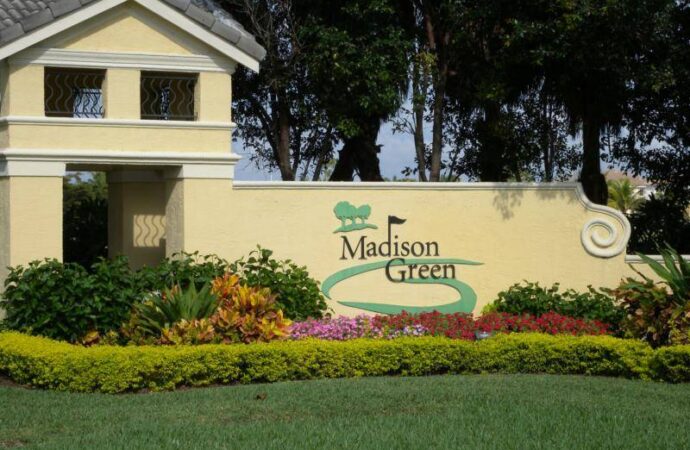Premier Interior/Exterior Painting and Popcorn Ceiling Removal Company for Madison Green HOA Residents
Contact Us

Wellington Pro Painters & Popcorn Removal has provided services for an extended period in Madison Green HOA. We provide services like residential painting, commercial painting, popcorn ceiling removal, residential popcorn ceiling removal, commercial ceiling removal, knockdown textures, orange peel ceiling, smooth ceiling finish, drywall repairs, and drywall installations.
Popcorn ceilings are a common feature of homes built in the 20th century. Popcorn ceilings are not typical in modern homes. There are many other options. These ceilings are easy to identify because they have been textured with Styrofoam, stucco, or other materials. This gives them a bumpy appearance reminiscent of popcorn. These ceilings were once trendy but are now gone. This is why? Is there any benefit to this ceiling? Why would homeowners choose this style?
What is Popcorn Ceiling?
Popcorn ceilings were also known as stucco ceilings or acoustic ceilings. They were prevalent in homes built between 1930 and 1990. These ceilings are known for their texture and can be stippled with sponges or sprayed with a hopper gun using special mixtures. They were often found in the entrance halls, bedrooms, and basements of homes.

A Trend That’s Unpopular
We popularized this method many decades ago as a cheaper option for painting the ceiling. Spraying a mixture that looked similar to cottage cheese created the ‘popcorn effect,’ homeowners didn’t have to worry about fixing any imperfections beforehand. The texture would cover any cracks and smaller holes in the ceiling, so it was unnecessary to paint them. Popcorn ceilings were a time- and cost-saving solution many families found affordable. It’s not bad at all!
This fad was quickly discarded in the United States in the late 197os. Inhaled asbestos, a binding ingredient in popcorn ceiling mixtures, was discovered to cause mesothelioma. Popcorn ceilings were created using materials like Styrofoam to replicate the same stippled effect. These ceilings are still in use today, despite their declining popularity.
Keep up appearances
Popcorn ceilings can be either outdated or well-suited for your interior, depending on what look you are going for. It all depends on your personal preference. However, they conceal imperfections, cracks, and scuff marks better than regular, smooth ceilings. Because the texture can cast shadows and is coarse, it can hide or cover entirely older, less-than-stellar repair jobs.
Although smooth ceilings appear more modern and polished, natural indoor lighting can reflect evenly onto flat surfaces. It is harder to hide seams, cobwebs, and other drywall imperfections. Many options are available today regarding ceilings, so don’t feel compelled to choose one.
Acoustics are Important
Popcorn ceilings are often called acoustic ceilings because they absorb sound better. The increased surface area of popcorn ceilings is due to the raised bumps, which help muffle the sound.
This is an excellent option if your floors have lots of traction or when you want to grab a snack at night. Popcorn ceilings are a great way to reduce noise in areas more susceptible to louder sounds. We have many other options if you don’t want popcorn on your ceiling but still want to soundproof the home.
Cleaning & Repairing Popcorn Ceiling
Popcorn ceilings have a downside. It is difficult to maintain the ceiling’s surface and repair any cracks or holes that might develop over time. Dust, spiders, and other dirt can get trapped in bumps. Smoke can stain ceilings and cause damage that can be very difficult to repair. We can use a duster or the brush tip of your vacuum to remove debris. However, if we push too hard, higher ceiling particles may fall off and break, which could cause more aesthetic damage than good.
Repairing ceiling holes or bumps that fall off during cleaning is challenging. We will first need to remove all bumps from the damaged area. Next, we will sand the surface smoothly. Finally, apply drywall plaster and finish painting. Contact us today to help you with your project.
Locations We Serve
We offer the above services at the following locations within Wellington:
Additional HOAs We Service
If you are located in Palm Beach County and you don’t see your city/area listed above, don’t worry! We cover all of Palm Beach County. Fill out the contact form above or CLICK HERE and send us a message. We’ll get back to you asap!
Here is a list of our services you can get at Wellington Pro Painters & Popcorn Removal:
-
Commercial Painting Near Me
-
Commercial Popcorn Removal Near Me
-
Drywall Repair Near Me
-
Drywall Installation Near Me
-
Knockdown Texture Near Me
-
Orange Peel Ceilings Near Me
-
Residential Painting Near Me
-
Residential Popcorn Removal Near Me
-
Smooth Ceiling Finish Near Me
-
Commercial Painting Services
-
Commercial Popcorn Removal Services
-
Drywall Repair Services
-
Drywall Installation Services
-
Knockdown Texture Services
-
Orange Peel Ceilings Services
-
Residential Painting Services
-
Residential Popcorn Removal Services
-
Smooth Ceiling Finish Services
-
Commercial Stucco Installation Near Me
-
Complete EIFS Reinstallation Near Me
-
Custom Stucco and Texturing Near Me
-
Denglass Framing Near Me
-
EIFS Inspection Near Me
-
EIFS Installation Near Me
-
EIFS Wall Systems Near Me
-
Exterior Kitchen Stucco Near Me
-
New Construction Stucco Near Me
-
Stucco Application Near Me
-
Commercial Stucco Installation Services
-
Complete EIFS Reinstallation Services
-
Custom Stucco and Texturing Services
-
Denglass Framing Services
-
EIFS Inspection Services
-
EIFS Installation Services
-
EIFS Wall Systems Services
-
Exterior Kitchen Stucco Services
-
New Construction Stucco Services
-
Stucco Application Services

